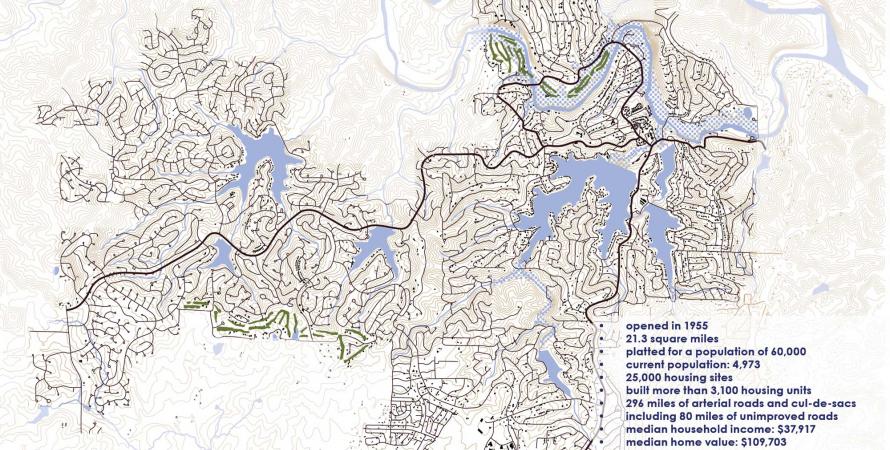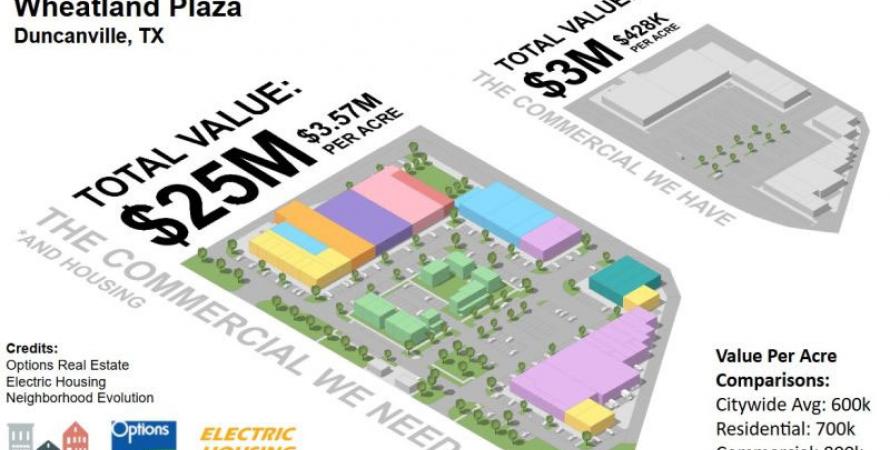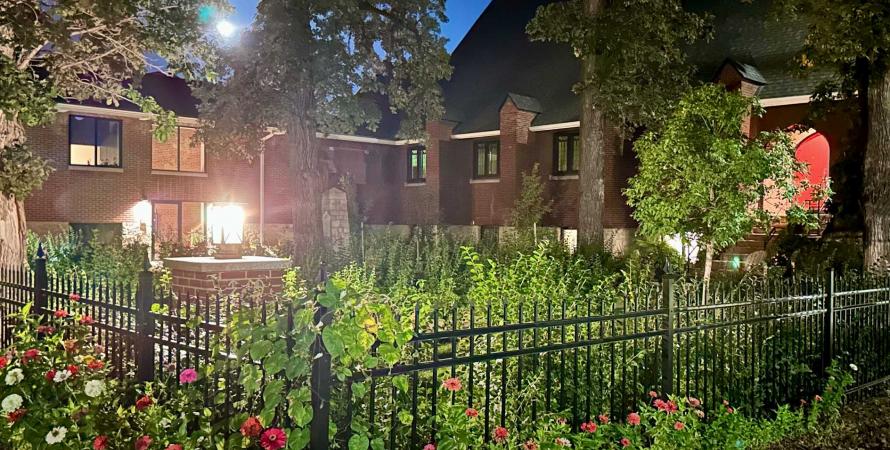-

Mapping the culture and retrofit of a car-oriented community
A Framework Plan for Cherokee Village envisions retrofitting a partially built 20th-century new town. University of Arkansas Community Design Center won a Merit Award in The Region: Metropolis, City and Town category of the 2025 CNU Charter Awards.Cherokee Village is a mid-20th-Century planned new town that failed to reach its full potential. After 70 years, only 20 percent of the lots are built, housing a population of about 5,000 people. It was planned for 60,000 people, served by nearly 300 miles of roads over 21 square miles of northern...Read more -

Adding value to a commercial shopping center
Wheatland Plaza in Duncanville is a model for adding value to an underutilized site along a suburban arterial through an efficient mixed-use design.As retail suffers and goes through technological change, this presents problems and opportunities for local communities—some of which can be solved through design transformations. Thousands of strip malls are struggling or vacant, especially in the suburbs. This image from Wheatland Plaza in...Read more -

Trails, greens, and housing trending for retrofit
Williamson and Dunham-Jones explain what's hot in reforming suburbs on CNU’s On the Park Bench.The suburban built environment has symbolized America since the 1950s, and it desperately needs an upgrade. Many malls, commercial strips, and office parks are struggling or dying, unable to compete with the Internet and hurt by remote work. Architectural professors June Williamson and Ellen Dunham...Read more -

Old walls, new homes
Adaptive reuse as a solution for housingAcross the United States, cities are grappling with housing shortages and the challenge of revitalizing underutilized spaces. Vacant malls, abandoned factories, shuttered schools, and empty churches often sit idle, wasting valuable potential. But these structures don’t have to remain relics of the...Read more